Human hair (head hair) is looked at with wonder and awe. It is connected with beauty and power and has mythical and magical connotations. Tamed, combed and groomed hair is a symbol of class, elegance, and angelic beauty. Unruly, untamed hair is notoriously linked to rebellion, evil and demonic qualities and groomed hair the mark of civilisation very early on in history. This is not my personal opinion though. Coming back to grooming needs of man, researchers say that early man may have cut his hair using sharp quartz or silica crystals or teeth of the animals that he hunted. The earliest hair grooming implements would have been finger like projections to sort tangled hair. In this post, I would like share information about the fascinating world of combs along with some quick illustrations of Ethnic hair combs that I created.
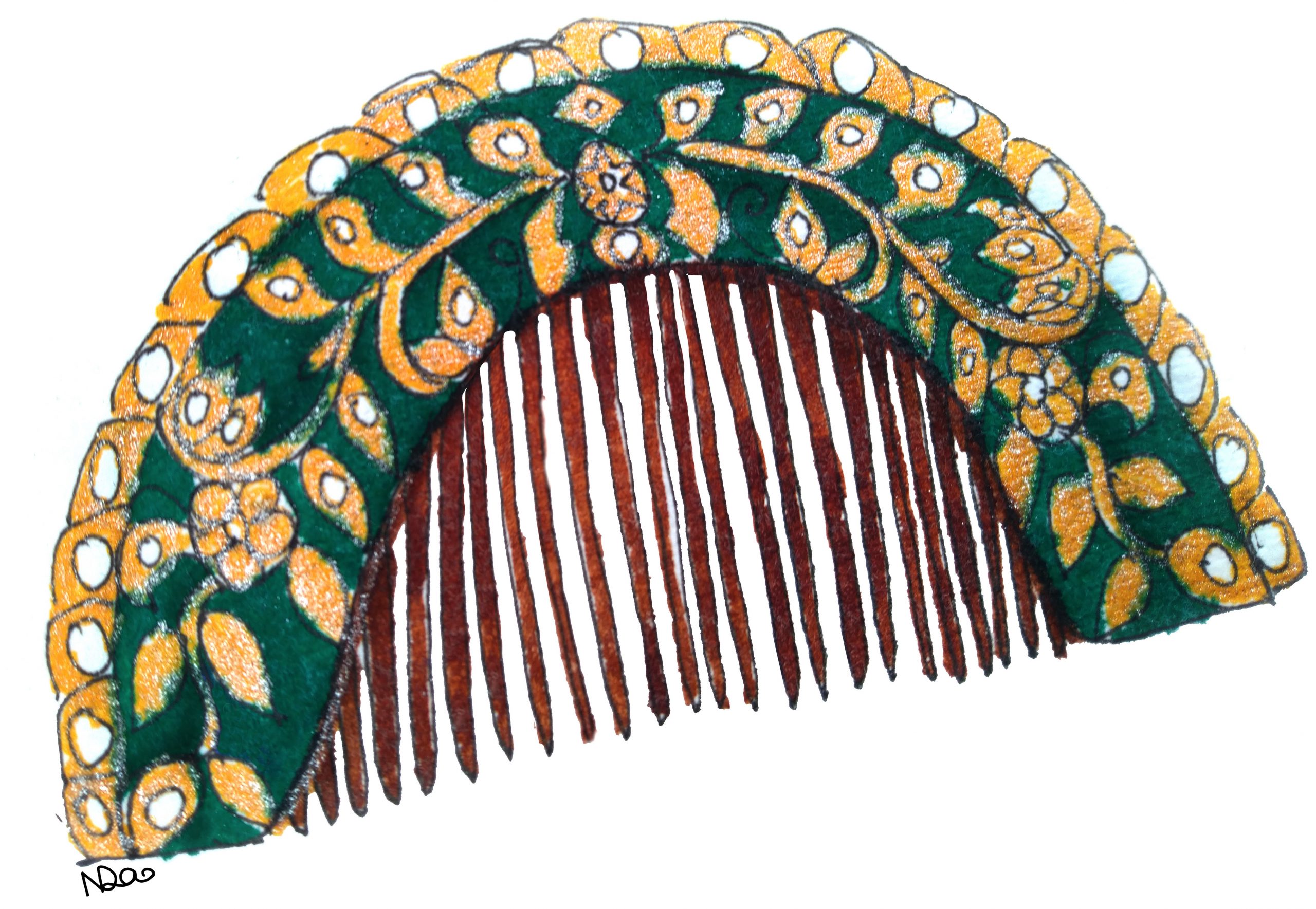
Hair grooming – a super quick history
Ancient Sumerian and Assyrian men were known for their groomed beards of curls and ringlets. The carved combs of ancient Egyptians are some of the earliest hair grooming implements known to man. Khesh Shringar (hair care and adornment) has been followed in India and has been followed for more that 3500 years. Keshapasharachana is the art of arranging sections of hair in an aesthetic manner and a part of Shola Shringar (16 adornment practices). Flowers, jewellery and other accessories add beauty to the hairstyle. Wooden combs with built in oil containers featured prominently in grooming rituals.
Exquisitely made ancient Chinese hair combs of jade or lacquer are a collector’s delight. Barbers and Ornatrixes were extremely popular in Ancient Greece and Rome. Elaborate hairstyles – both using the person’s own hair or wigs was a symbol of beauty in several ancient cultures. Kings and Queens had toilet boxes where hair combs occupied a place of pride. Portraits of noble women from 15th Europe show how their much prized “golden hair” was pulled back and tied into buns. 18th century Europe is known for its towering hairstyles of women which subsequently reduced to Grecian styles at the end of the century.
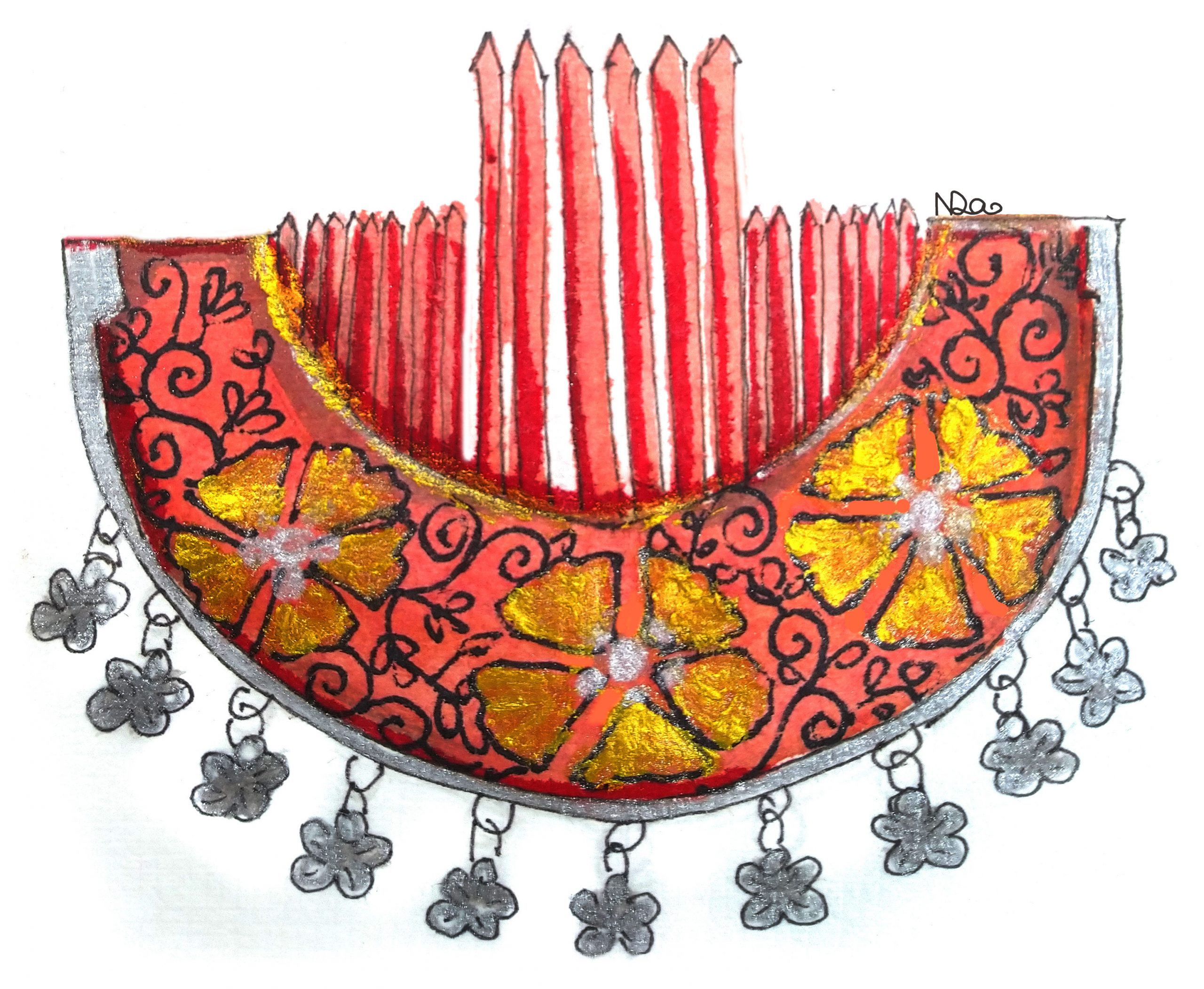
Ethnic Hair combs
Ethnic hair combs refer to combs that are used by ethnic groups traditionally. This name is not specific to any one particular geographic location but prevalent in most ancient cultures. When I refer to modern combs, I refer to Western combs from 18th century (modern period). Ethnic Hair combs were made from a variety of materials. Wood was the most common, followed by ivory, jade, tortoise shell, metal and horn. They could be decorated using lacquer, silver and gold coverings and embellishments, gemstone beads and gems such as diamonds.
The images in this post are from a series of quick sketches that allow me to capture the feeling of the pieces without aiming for authentic reproduction. I did the sketches of combs on rag paper using water colours, makers, gold pigment, and liners. I am not great at sketching jewellery and hence this experiment as the means to learn by doing.
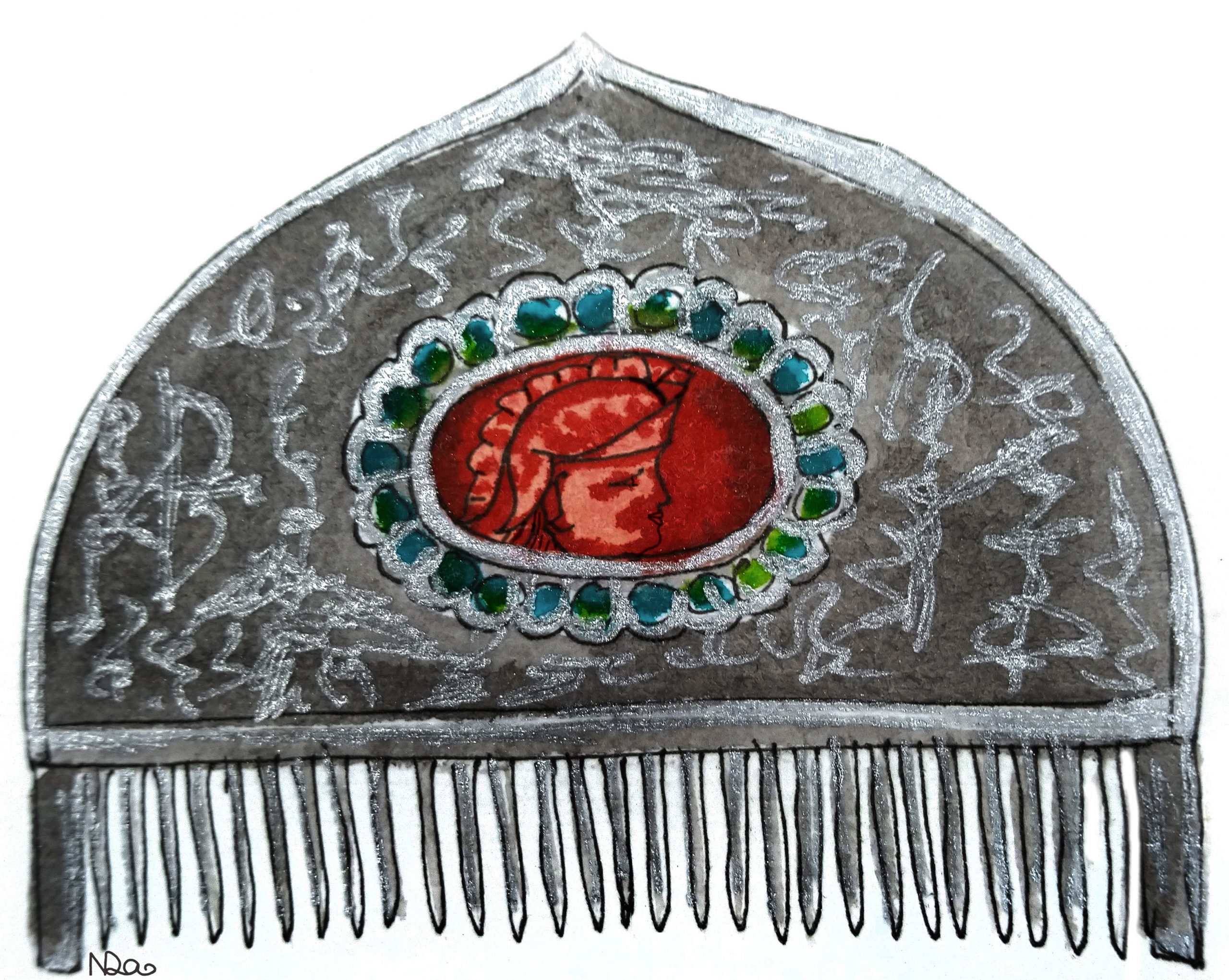
Types of Combs
Regardless of whether they are ethnic or modern, combs, are used to groom, maintain, style and ornament hair. Combs can be divided into three categories based on their function. They are hair combs, flea or louse combs and decorative combs. We use hair combs to part hair for hair colouring or styling, de-tangling, brushing and taming stray hairs. The handle of combs in such cases is based on the practical function. Flea combs or nit combs are those used to comb out lice and other vermin in the hair. Double sided combs can be used for both cleaning and styling hair. Decorative combs are accessories and jewellery that hold hair in place, in a specific style. They can be used for minor combing/styling as well.
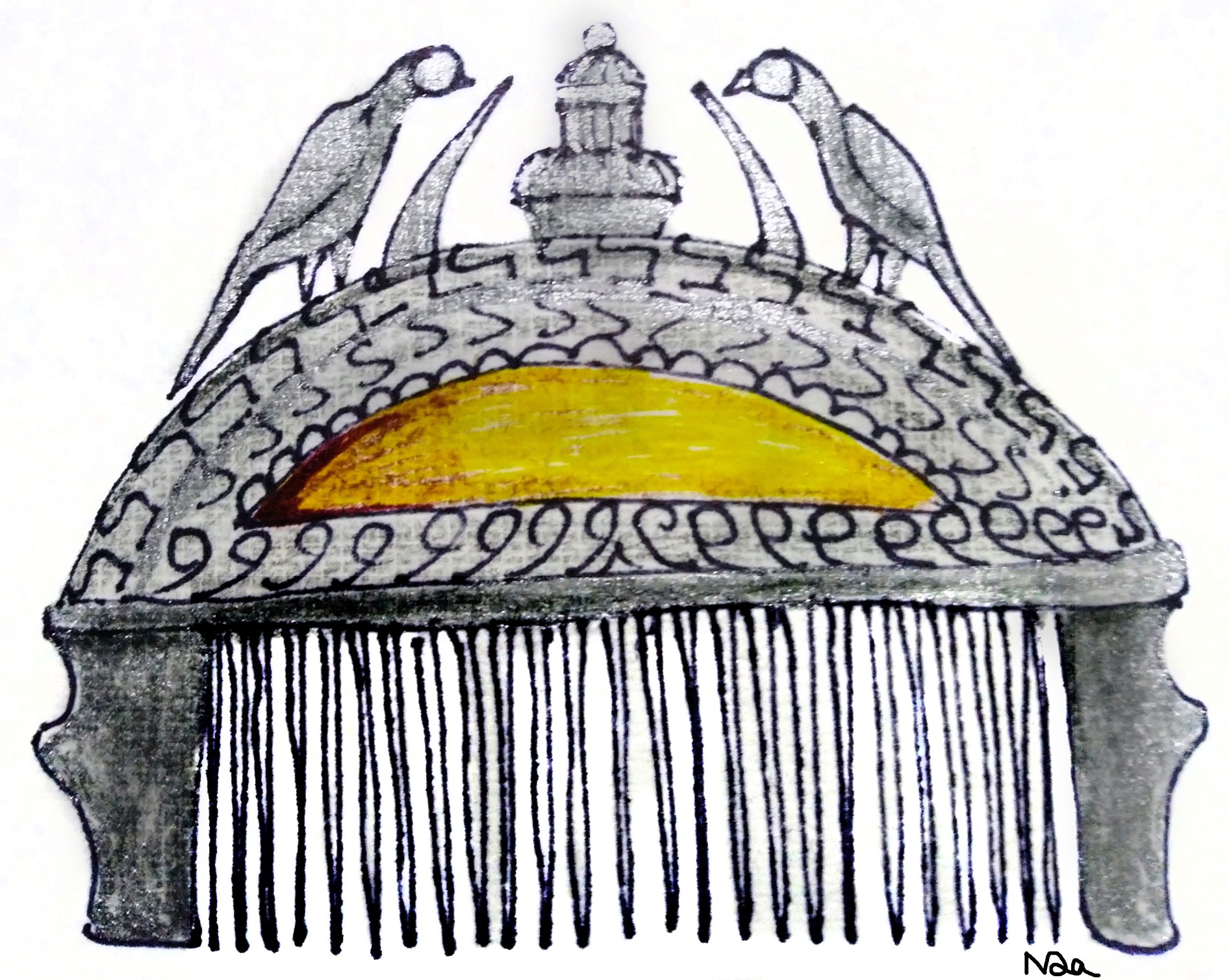
All these combs have teeth. However, their length, width, girth and space between them depend on the material that they are made of and their end use. All the Ethnic hair comb illustrations shown in this post belong to the category of decorative combs.
Other uses of Combs
Ikat Nedej, who frequently posts about combs in Ethnic Jewels Community on Facebook, says that not all collectible ethnic combs are hair combs. He notes that Inuits, Navajo and Zuni people made combs that helped them with pottery and weaving. I have seen many weavers in Tamil Nadu use both wooden and metal combs to separate warp yarns. Combs are used to make music and can be see in use in junk music competitions even today. There may be many more uses of combs but that is beyond the scope of this post. Do join the closed group if you want to learn more. Three of the illustrations in this post are quick captures of photographs of combs posted in the group.
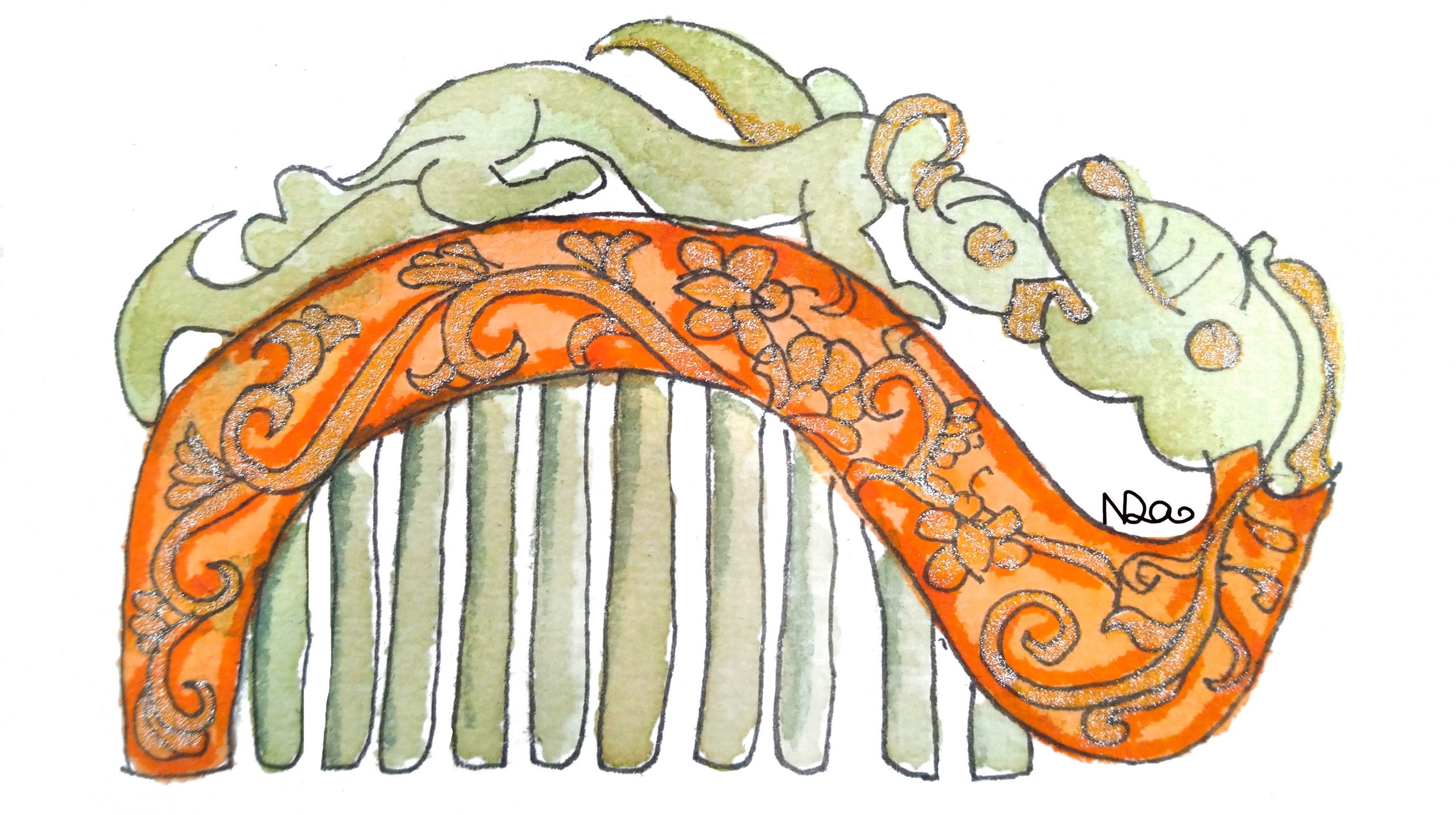
Combs in the modern period
In the West, ornamental combs that doubled up as jewellery gained popularity in the Victorian era. Queen Josephine (wife of Napoleon) wore a back comb like a tiara. Known as the “Peigne Josephine,” the brass comb was decorated with corals and seed pearls. Decorative hair combs was one of the opt designed objects in the Art Nouveau period. With motifs such as flowers and berries and possessing sinuous forms the pieces were loaded with metaphors.
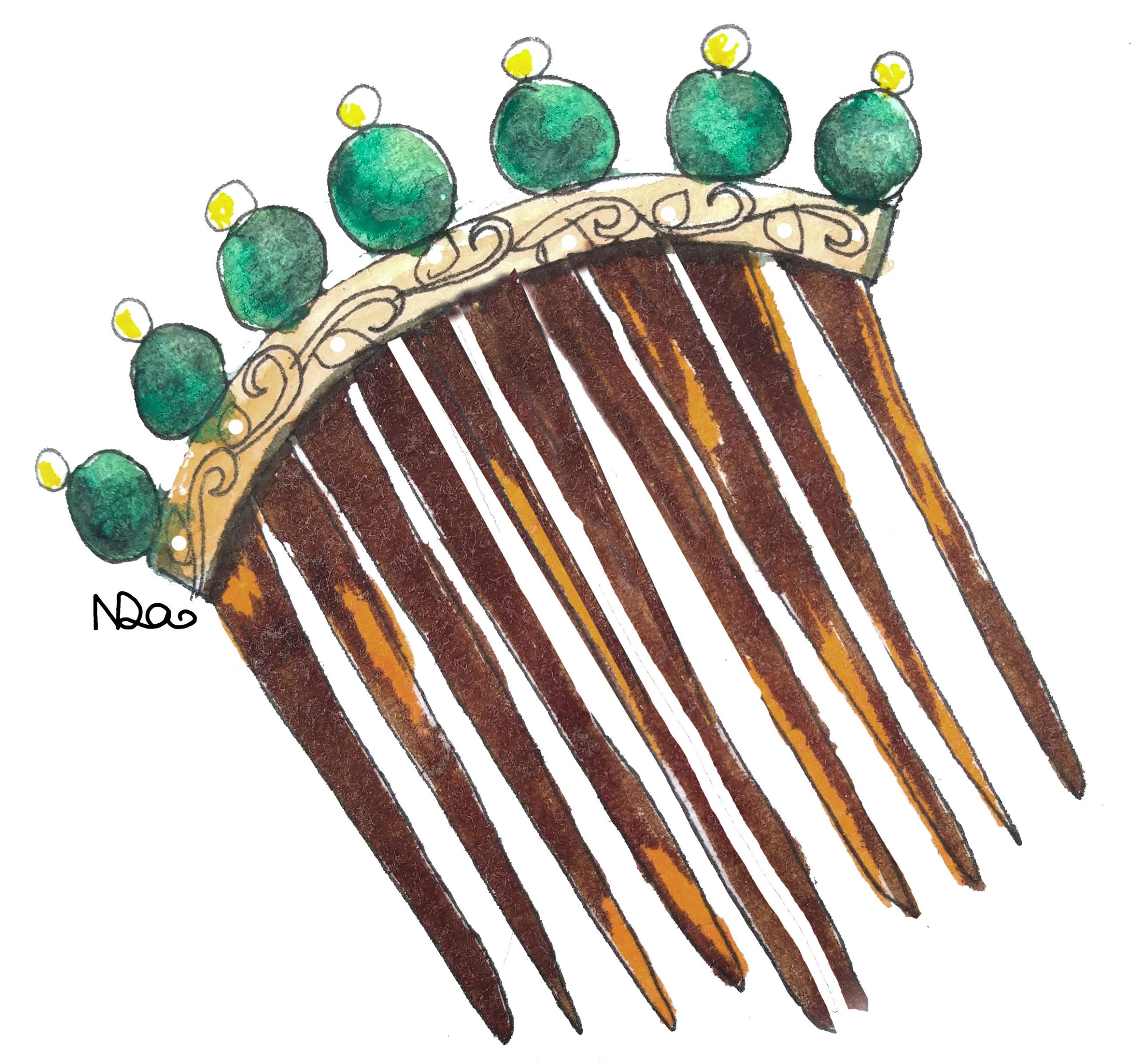
The invention of vulcanisation of rubber was a game changer for combs. Combs made of hard rubber gained popularity as “unbreakable combs.” While celluloid was the first plastic to be used in comb making, it was flammable. From 1950s till date Polypropylene (plastic) combs rule the roost. Now, a comb is more of a utilitarian tool than a decorative object that performed several functions, including combing hair.
While the illustrations in this post are representative of ethnic and modern combs, combs in similar styles continue to be made at the present. They can be fantasy objects representing the historical period, replicas, or even tourist souvenirs. Contemporary decorative combs can be made of any material – including paper on metal. Check out this quilled paper comb tutorial.
Further Reading
Since hair adornment and hair combs are topics where a lot of research has already been done, I direct you to some resources that may give you indepth information.
I hope you found it interesting
Cheers


Leave a Reply